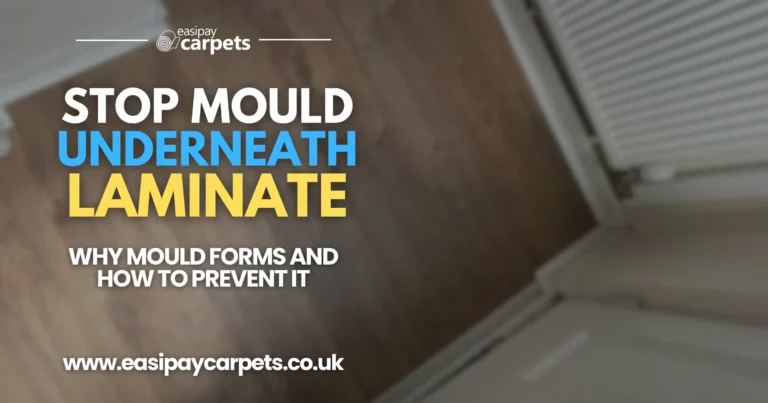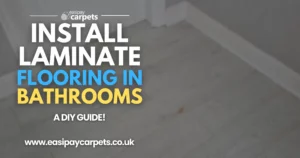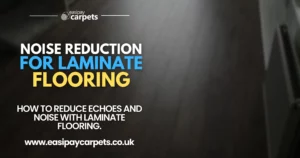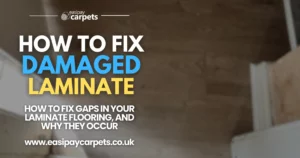

Keeping Laminate Flooring Mould-Free: Prevention Made Easy
Preventing Mould Under Laminate Flooring
Mould growth under laminate flooring is a common concern, especially in areas prone to moisture or high humidity. Not only does mould damage your flooring, but it can also pose serious health risks, including allergies and respiratory problems. Fortunately, preventing mould is straightforward with the right precautions and maintenance practices.
This guide will explain the causes of mould growth under laminate flooring, how to prevent it, and what to do if you suspect it’s already there.
Why Does Mould Form Under Laminate Flooring?
Mould thrives in damp, dark, and poorly ventilated environments. Under laminate flooring, these conditions can arise due to:
- Moisture Seepage: Water from spills, leaks, or subfloor dampness can become trapped under the laminate.
- Poor Ventilation: Inadequate airflow prevents moisture from evaporating, encouraging mould growth.
- High Humidity: Rooms with high humidity levels, such as bathrooms and basements, are particularly vulnerable.
- Improper Installation: Failing to use a moisture barrier or seal edges properly can leave the subfloor exposed to moisture.
How to Prevent Mould Under Laminate Flooring
Ensure Proper Subfloor Preparation
Before installing laminate flooring, it’s crucial to prepare the subfloor.
- Clean and Dry: Remove any dirt, dust, or debris, and ensure the subfloor is completely dry before installation.
- Check for Moisture: Use a moisture meter to test the subfloor. If moisture levels are high, address the issue with a dehumidifier or repairs.
Install a Moisture Barrier
A moisture barrier is a thin, protective layer placed between the subfloor and the laminate flooring.
- Material Options: Choose polyethylene plastic sheeting or underlays with built-in moisture resistance.
- Where It’s Needed: Always use a moisture barrier over concrete subfloors or in moisture-prone areas like kitchens and basements.
Seal Gaps and Edges
Laminate flooring should be properly sealed to prevent water from seeping through cracks.
- Edge Sealing: Use silicone caulk to seal the edges of the laminate near walls, doorways, and other vulnerable areas.
- Avoid Overlapping: Ensure planks are laid snugly without gaps that can allow moisture penetration.
Maintain Low Humidity Levels
Keeping humidity under control is essential to preventing mould growth.
- Optimal Humidity: Maintain indoor humidity between 30% and 50% using a hygrometer.
- Dehumidifiers: Use a dehumidifier in damp areas to reduce excess moisture in the air.
- Ventilation: Ensure proper ventilation by opening windows, using extractor fans, or installing air vents.
Clean Spills Immediately
Spills and standing water should never be left on laminate flooring.
- Quick Action: Mop up spills as soon as they occur.
- Dry Thoroughly: Use a dry cloth or fan to ensure no moisture remains trapped on the surface or between planks.
Avoid Wet Mopping
While regular cleaning is important, excessive water use can lead to moisture seepage.
- Cleaning Tips: Use a damp mop rather than a soaking wet one and dry the floor immediately after mopping.
- Laminate-Friendly Products: Choose cleaning solutions specifically designed for laminate flooring.
Regular Inspections
Inspect your flooring periodically to catch early signs of moisture or mould.
- Check Vulnerable Areas: Pay attention to corners, edges, and areas near water sources.
- Lift Flooring (If Necessary): If you suspect mould, carefully lift a plank to inspect the subfloor.
Signs of Mould Under Laminate Flooring
Detecting mould early is key to preventing extensive damage. Common signs include:
- Musty Odours: A persistent damp or musty smell can indicate hidden mould.
- Discolouration: Dark spots or stains on the laminate surface may be a warning sign.
- Warping or Buckling: Mould can cause laminate planks to warp or lift.
- Health Symptoms: Allergies, coughing, or respiratory issues in the household could point to mould problems.
What to Do If Mould Is Present
If you discover mould under your laminate flooring, take action immediately.
- Remove Affected Flooring: Carefully lift and discard mouldy planks.
- Clean the Subfloor: Use a mould remover or a mixture of water and white vinegar to clean the subfloor. Allow it to dry completely.
- Address Moisture Issues: Identify and resolve the source of moisture before reinstalling flooring.
- Replace Flooring: Use fresh laminate planks and ensure proper installation with a moisture barrier.
Conclusion
Preventing mould under laminate flooring starts with proper installation and consistent maintenance. By preparing the subfloor, using moisture barriers, controlling humidity, and addressing spills promptly, you can keep your flooring mould-free and in excellent condition. Regular inspections and cleaning will ensure that your laminate flooring remains safe, durable, and beautiful for years to come.
Easipay Carpets can help you get brand new flooring without the high up-front cost – by simply letting you spread the cost of the flooring over time instead. There’s no interest on our plans so you aren’t spending a penny more than you would buying it outright and we include underlay, door trims, carpet grippers and laminate beading for free. Prices start from just £10 per week!
It starts with a free home appointment and quote, to get booked in at a time that suits you, tap the “Get Started” button below and fill out the contact form!
Still Got Questions? Here's 10 FAQs!
No, the laminate must be lifted to fully clean and address mould growth underneath.
Polyethylene sheeting or underlays with built-in moisture resistance are excellent options.
Use a moisture meter to check subfloor levels. Moisture should be below the manufacturer’s recommended threshold.
Yes, prolonged exposure to high humidity can lead to condensation and mould growth beneath the flooring.
Laminate is not ideal for damp areas unless a proper moisture barrier and precautions are in place.
Inspect every few months or if you notice signs like musty odours or buckling planks.
Use pH-neutral cleaners or solutions specifically designed for laminate to avoid moisture damage.
No, steam mops can force moisture into the flooring and lead to mould or warping.
Use a moisture barrier, dehumidifier, and proper ventilation to minimise dampness.
Only replace affected planks, provided the rest of the flooring and subfloor are mould-free.




